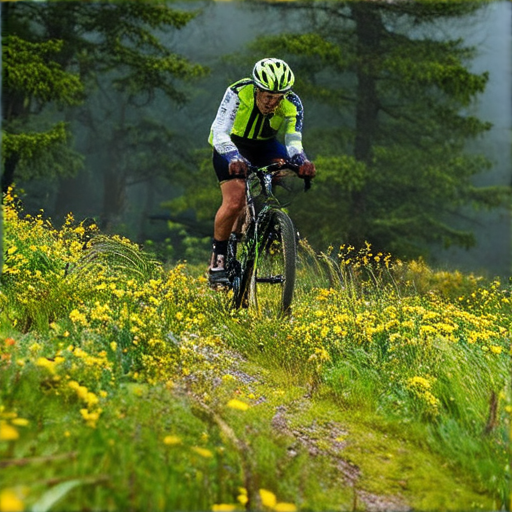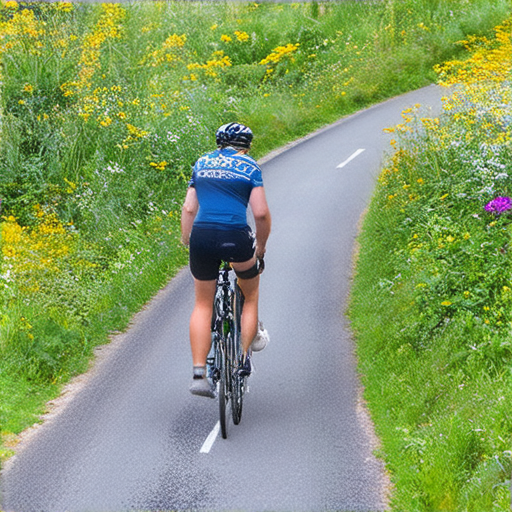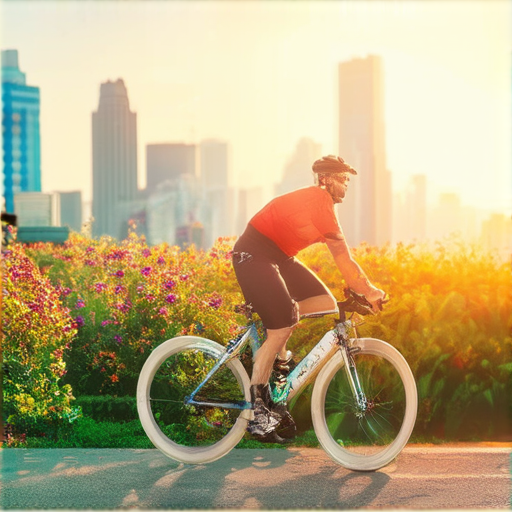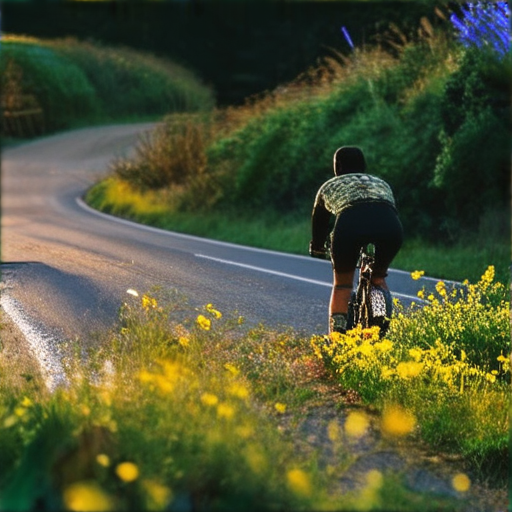Cycling has become an increasingly popular mode of transportation and recreation, offering numerous health benefits and environmental advantages. However, it also comes with inherent risks, particularly when sharing roads with motorized vehicles. As a cyclist, being aware of essential road safety guidelines is crucial to minimize the risk of accidents and injuries. From wearing proper safety gear to following traffic rules, understanding the 75 rule in cycling, and adhering to basic and advanced rules of the road, there are several factors to consider for a safe and enjoyable cycling experience.

Safety Guidelines for Cyclists
We take cycling safety very seriously at Leeds Bicycle, which is why we’ve compiled these essential guidelines to help keep you safe on the roads.
-
Wear Protective Gear
Wear a properly fitted helmet, along with knee and elbow pads, to protect yourself from injuries in case of a fall.
-
Ride Defensively
Anticipate the actions of other road users, such as cars and pedestrians, and always be aware of your surroundings.
-
Follow Traffic Rules
Obey traffic signals, signs, and lane markings to minimize conflicts with other drivers and pedestrians.
-
Maintain Your Bike
Regularly check and maintain your bike’s brakes, tires, and chain to ensure it’s in good working condition.
By following these simple yet crucial guidelines, you can significantly reduce your risk of injury or accident while cycling.
At Leeds Bicycle, we’re committed to promoting safe and enjoyable cycling experiences for everyone.
The 75 Rule in Cycling
The 75 rule in cycling refers to a training principle that suggests 75% of your weekly cycle training should be done below 75% of your maximum heart rate (MHR). This translates to three-quarters of your training being conducted in heart rate zones 1 and 2.
- This approach allows for consistent and progressive overload, enabling you to adapt to the demands of regular cycling.
- By focusing on lower-intensity training, you can improve cardiovascular fitness, increase endurance, and enhance overall cycling performance.
- A well-structured training plan incorporating the 75 rule can help you achieve your cycling goals, whether it’s completing a long-distance ride or improving your overall fitness.
Benefits of the 75 Rule
- Improved Cardiovascular Fitness: Regular low-intensity training helps strengthen your heart and lungs, allowing you to perform at a higher intensity during high-intensity efforts.
- Increased Endurance: By spending more time in zone 1 and 2, you’ll develop greater muscular endurance, enabling you to sustain longer periods of moderate-intensity exercise.
- Enhanced Performance: A balanced training program incorporating the 75 rule can lead to improved power output, speed, and overall cycling efficiency.
Implementing the 75 Rule
To incorporate the 75 rule into your training, consider the following guidelines:
- Zone 1 Training: Spend 50-60% of your total training time in zone 1, focusing on easy spinning and recovery rides.
- Zone 2 Training: Allocate 15-20% of your training time to zone 2, targeting moderate-intensity efforts and interval sessions.
- High-Intensity Training: Reserve 25-30% of your training time for high-intensity intervals and hill sprints, pushing yourself to your limits.
Tips for Successful Implementation
To get the most out of the 75 rule, remember to:
- Listen to Your Body: Pay attention to your physical sensations and adjust your training plan accordingly.
- Gradually Increase Intensity: Progressively overload your body with increasing intensity and duration to avoid plateaus and prevent injury.
- Monitor Your Heart Rate: Use a heart rate monitor to track your progress and stay within the designated zones.

What Are 10 Rules of the Road for Cycling?
Bike in the direction of traffic.
-
Ride on the Right Side of the Road
Riding on the right side of the road allows you to face traffic and anticipate potential hazards. This rule applies to most countries, but it’s essential to check local regulations before riding.
-
Obey Traffic Signals and Signs
Just like cars, bicycles must obey traffic signals and signs. Come to a complete stop at red lights and stop signs, and yield to pedestrians and other vehicles when necessary.
-
Yield to Pedestrians and Other Cyclists
When approaching pedestrians or other cyclists, slow down and yield to them. Use hand signals to indicate your intentions and give them plenty of space to pass.
-
Use Hand Signals
Hand signals are crucial for communicating your intentions to other road users. Use them to indicate turns, lane changes, and stops.
-
Be Aware of Your Surroundings
Stay alert and aware of your surroundings, including other vehicles, pedestrians, and road conditions. Anticipate potential hazards and take steps to avoid them.
-
Ride Defensively
Ride defensively by assuming that other drivers may not see you or respect your rights as a cyclist. Stay visible, use reflective gear, and be prepared to react to unexpected situations.
-
Follow Speed Limits
Respect speed limits and ride at a pace that’s safe for the road conditions. Excessive speeding can lead to accidents and injuries.
-
Use Lights and Reflectors
Use front and rear lights, as well as reflectors, to increase your visibility to other road users, especially at night or in low-light conditions.
-
Carry Identification and Emergency Contact Information
Always carry identification and emergency contact information, such as a driver’s license and a phone number for a friend or family member.
-
Respect Bike Lanes and Share the Road
Respect bike lanes and share the road with other cyclists and motorists. Use designated bike lanes when available, and signal your intentions to merge with traffic.

Cycling Safety Tips
To stay safe while cycling on the road, consider the following essential tips:
-
Wear Protective Gear
- Always wear a properly fitted helmet to protect your head.
- Consider wearing knee pads, elbow pads, and gloves for added protection.
- Make sure your bike has functioning brakes and reflectors.
-
Ride Defensively
- Anticipate the actions of drivers and pedestrians around you.
- Stay alert and focused on the road ahead.
- Avoid distractions like using your phone or listening to music while riding.
-
Follow Traffic Rules
- Obey traffic signals and signs just like drivers do.
- Use designated bike lanes whenever possible.
- Be aware of your surroundings and yield to others when necessary.
-
Be Visible
- Use front and rear lights to increase visibility, especially at night or in low-light conditions.
- Wear bright or reflective clothing to make yourself more visible to drivers.
- Consider adding a mirror to your handlebars to stay aware of your surroundings.
-
Maintain Your Bike
- Regularly check and maintain your tire pressure, brakes, and chain.
- Keep your bike clean and free of debris to prevent accidents.
- Consider taking your bike to a professional mechanic for regular tune-ups.
-
Plan Your Route
- Choose routes with minimal traffic and adequate bike infrastructure.
- Avoid busy roads and construction zones whenever possible.
- Consider using a GPS device or app to plan your route and track your progress.
By following these cycling safety tips, you can reduce your risk of injury and enjoy a safer, more enjoyable ride.
How to Make Roads Safer for Cyclists
We believe that making roads safer for cyclists requires a multi-faceted approach that involves infrastructure design, education, and community engagement.
-
Infrastructure Design
- Separate Bike Lanes: Installing separate bike lanes with a buffer space between the bicycle lane and motorized traffic lanes can significantly reduce the risk of accidents.
- Bike-Friendly Road Designs: Implementing bike-friendly road designs, such as roundabouts and traffic circles, can slow down traffic and reduce conflicts between cyclists and motorists.
- Protected Bike Lanes: Protected bike lanes with physical barriers, such as bollards or planters, can provide an added layer of safety for cyclists.
-
Education and Awareness
- Cyclist Education: Educating cyclists on safe riding practices, such as obeying traffic laws and wearing protective gear, can help reduce the risk of accidents.
- Motorist Education: Educating motorists on sharing the road with cyclists and respecting their space can also contribute to a safer environment for cyclists.
- Community Engagement: Engaging with local communities to promote cycling as a safe and sustainable mode of transportation can help raise awareness and encourage behavior change.
-
Traffic Management
- Speed Limit Enforcement: Enforcing speed limits and reducing speeds in areas with high cyclist traffic can help prevent accidents.
- Traffic Signal Optimization: Optimizing traffic signals to give priority to cyclists and pedestrians can help reduce congestion and improve safety.
- Law Enforcement: Increasing law enforcement presence in areas with high cyclist traffic can help deter reckless driving and promote compliance with traffic laws.
By implementing these measures, we can work towards creating a safer and more welcoming environment for cyclists on our roads.
At Leeds Bicycle, we believe that cycling is a vital part of a healthy and sustainable lifestyle, and we’re committed to promoting safe and accessible cycling practices throughout our community.

Overcoming Fear of Cycling on the Road
Cycling on the road can be intimidating, especially for beginners. However, with gradual exposure and practice, you can build your confidence and become a skilled cyclist.
- Start Small: Begin by practicing in quiet areas, such as bike paths or empty parking lots. As you gain comfort, move on to busier streets during off-peak hours.
- Ride with a Buddy: Having a cycling partner can make the experience less daunting. They can offer support, encouragement, and help you stay focused on the road.
- Take a Cycling Course: Consider enrolling in a beginner’s cycling course, which covers essential skills, safety guidelines, and local traffic laws.
- Invest in Safety Gear: Wear a properly fitted helmet, high-visibility clothing, and consider adding lights or reflectors to increase visibility.
- Practice Regularly: Consistency is key to building confidence. Aim to ride regularly, even if it’s just a short distance, to develop muscle memory and improve your skills.
Tips for Cycling on Busier Roads
- Stay Alert: Keep an eye out for potential hazards, such as potholes, debris, or pedestrians.
- Follow Traffic Rules: Obey traffic signals, signs, and lane markings to minimize conflicts with motor vehicles.
- Communicate with Drivers: Use hand signals and verbal cues to alert drivers of your intentions, reducing the risk of accidents.
- Be Visible: Wear bright colors, use lights, or attach reflective materials to increase your visibility to motorists.
Building Confidence and Enjoyment
As you progress, remember to celebrate small victories and acknowledge your growth. Focus on enjoying the experience, exploring new routes, and connecting with fellow cyclists. With patience and persistence, you’ll overcome your fears and become a confident cyclist.

0 Comments